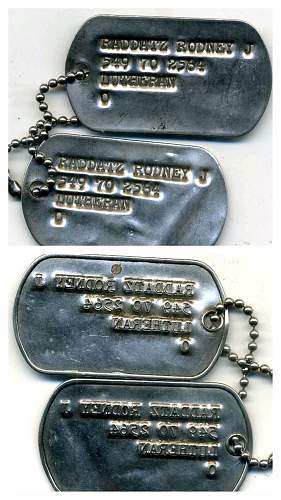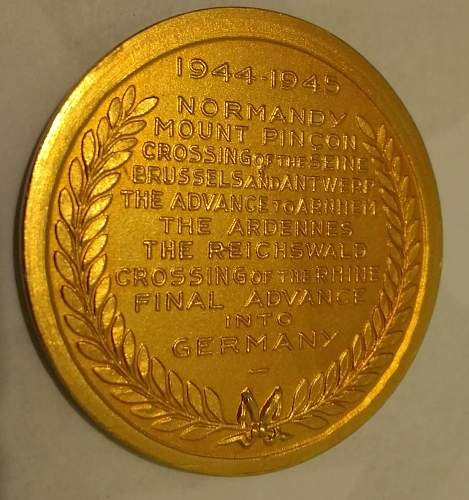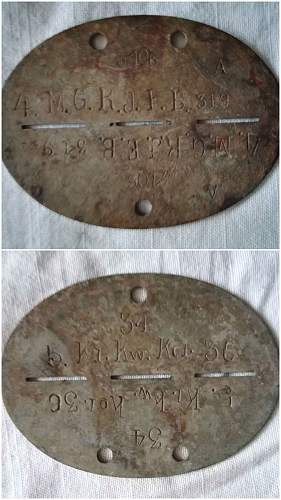“DACHAU” stamp on inside of overseas/side cap
The cap itself was quite a challenge to id. I think I finally did and it is a legitimate cap. The dark green cap best matched the French WW1 "bonnet des Police style-1918 which also was the style adapted by the US Army in 1917 to replace the "tent" style campaign hat. The style hat as made terminated with an open split "V" design at the front. Some creative individual did almost a perfect stitching closing the "V" on both sides to now be a single stitched cap front to which the ss black panzer trapazoid was sewn correctly. Now when worn the cap forces a front peaking up of the insignia.
The cap is consistent with materials of the period; sweat formation and evaporation have caused the sweatband rear terminus stitch on the left side for maybe 1/2 inch to "curl" upward there and also on the left side outer stitched side for approximately an inch also to curl. The cap and insignia pass the black light test. The cap has one minor moth hole and the interior has no stamps and it totally was well sewn with a black satin type of material. The cap was well made and has no smell.
That fact that is a ww1 French overseas cap with a late war legitimate ss panzer insignia should end the discussion but I have one caveat. On the inside right seam of the sweatband is a black block lettered stamp "D A C H A U" at the top of a stylized national eagle facing left and attached to a below swatstika design.
Now excluding all the obvious mentioned time period conflicts I have a question.
The obvious simple answer is the stamp also is a fake. Is it really or are there documented examples of this stamp being used at DACHAU forced labor workshop either for documenting an item which was received for repair or has finished repair and ready for shipment back to the Wehrmacht or SS reissuing point. It may a separate issue not related to the above discussed modification.
Other than parroting posts of "fake" can anyone provide proof either way of validity of this "DACHAU. The "H A U" is the hardest letters to see. I have different attached tinted jpgs of the stamp because it is difficult to read because the sweatband has a slight rough texture, not smooth. There were several attempts at trying for a full stamp the last attempt being the most successful but it half resulted more in a light stamp.
To recap has anyone seen this "DACHAU" stamp on vet bring back items? If so has it been validated either way?
FYI I may have reached a maximum of pictures to load per post. I will attempt load the remaining ones in a future post.
John













